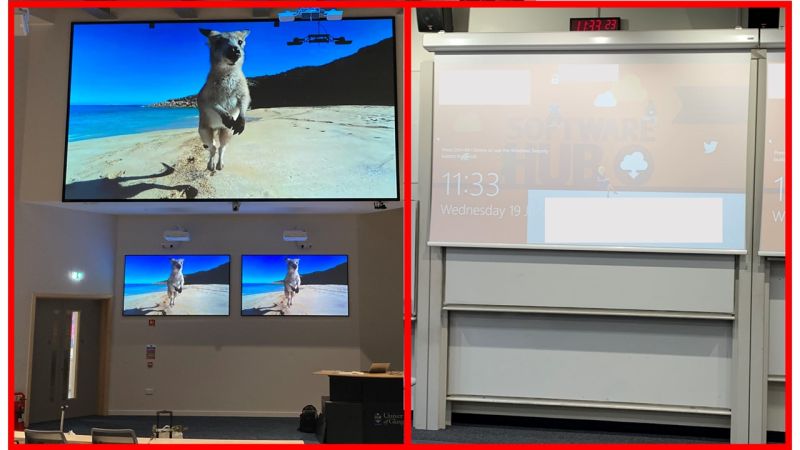Why hybrid spaces fail unless you use optical ALR laser projection.
Why projection will change in 2022.

As part of a series of short articles, Visual Displays' Director Greg Jeffreys discusses all things AV…
These two images have one thing in common: they are unretouched iPhone photos of large projected images…

The one on the left (ISCR contrast > 15:1) is Glasgow Uni’s new learning & teaching hub. The one on the right (ISCR contrast < 2:1) could be anywhere: most campuses or organisations have one like this. (We’ll just leave the question hanging there as to why organisations spend money on lights and electricity to actively kill the activity the space is actually designed for. Anyway, moving swiftly on…)
There’s been a tacit acceptance of what scientists call crap projection. Washed out PowerPoint or Excel? You’ll just have to suck it up. Except you can’t anymore. That resigned acceptance of low contrast just won’t wash if you want to see and engage with remote users on your Teams/Zoom/GoogleMeet screens.
Any space that supports hybrid working has a VC camera. VC cameras need strong lighting. Strong lighting kills projection. Unless you use optical ALR (ambient light rejecting) screen technology.
Start with the end in mind, wrote the sage Stephen Covey in the 7 Habits book. According to AVIXA’s new ISCR standard, it’s black and white: a minimum 15:1 contrast ratio. (Except it’s pale grey and white if not done properly.)
The age-old mistake is to specify the projector before the screen. You can't even hazard a guess at what projector lumens you need if you haven’t specified what the viewers will actually look at, based on case-by-case room and user needs.
See our Case Study for the University of Glasgow's Learning Hub.
Posted: 13th January 2022